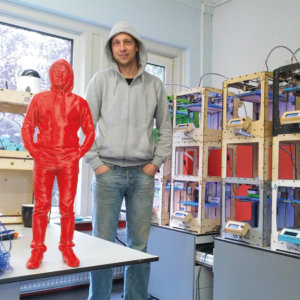Innovation Lessons From 3-D Printing
When people in online user communities start collaboratively developing open-source innovations that have the potential to change an industry, how should the existing companies in the industry respond?
Topics
These days, 3-D printing is big news.1 The use of 3-D printing and other related technologies is seen as having potentially transformative implications. “Just as the Web democratized innovation in bits, a new class of ‘rapid prototyping’ technologies, from 3-D printers to laser cutters, is democratizing innovation in atoms,” Wired magazine’s longtime editor-in-chief, Chris Anderson, stated in his new book Makers: The New Industrial Revolution.2 “A new digital revolution is coming, this time in fabrication,” MIT professor Neil Gershenfeld wrote in a recent issue of Foreign Affairs.3
But in addition to 3-D printing’s technological implications, recent evolutions in 3-D printing offer important management lessons for executives about the changing face of technological innovation — and what that means for businesses. In this article, we examine the rapid emergence of a movement called open-source 3-D printing and how it fits into a general trend toward open-source innovation by collaborative online communities. We then discuss how existing companies can respond to open-source innovation if it occurs in their industry — and whether such collaborative innovation projects represent a threat or an opportunity for existing businesses.
Trends in 3-D Printing
Also known as “additive manufacturing” or “rapid prototyping,” 3-D printing is the printing of solid, physical 3-D objects. Unlike machining processes, which are subtractive in nature, 3-D printing systems join together raw materials to form an object. Drawing on a computer-aided design (CAD) file, the design for an object is first divided into paper-thin, cross-sectional slices, which are then each ‘printed’ out of liquid, powder, plastic or metal materials in sequence until the entire object is created. The use of 3-D printing makes it possible to build physical models, prototypes, patterns, tooling components or production parts. Design and manufacturing organizations use it for product parts in the consumer, industrial, medical and military markets.
The longer-term implications of 3-D printing technologies are believed to be large.4 Direct advantages include enabling designers to operate more efficiently and conveniently. They can quickly prototype their designs in order to test their viability or demonstrate them.
References (26)
1. In newspapers and magazines, 3-D printing has been described enthusiastically as everything from “the technology that could re-shape the world” to “one that is about to transform every single aspect of our lives.” See, for example, S. Richmond, “3D Printing: The Technology That Could Re-Shape the World,” The Telegraph, July 28, 2011; and H. Lipson, “3D Printing: The Technology That Changes Everything,” New Scientist, July 30, 2011, p. 20.
2. C. Anderson, “Makers: The New Industrial Revolution” (New York: Crown Business, 2012): 14.






Comment (1)
IKEA ha muerto. Llega el Open IKEA Makerspace. | Pere Losantos